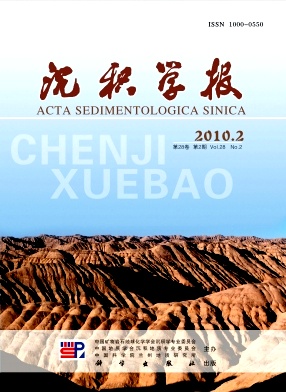Diagenesis and Pore Structure Characteristic of Yanchang Formation of Upper Triassic in Fuxian Exploration Area
- Received Date: 1900-01-01
- Rev Recd Date: 1900-01-01
- Publish Date: 2010-04-10
-
Key words:
- diagenesis
Abstract: On the basis of a careful analysis of thin section observation, scanning electron microscope and Xdiffraction data, the diagenetic stage of Yanchang Formation in Fuxian exploration area is the A stage of late diagenesis and the main diagenic metamorphism include mechanicalchemical compaction, consolidated fill and dissolution. The mechanicalchemical impact and consolidated fill are the main factors causing the loss of porosity for the sandstones. Carbonate, hydrosyalite and quartzfeldspar overgrowths are the main cements that reduced the reservoir quality of the sandstones.Thin chlorite film around detrital grains prevented from part of quartz and feldspar overgrowth and carbonate cement precipitation, which cause a part of primary pore preserved and hence caused a better reservoir quality. The main factor for the great quantity secondary pore is dissolution partly of detrital feldspars and laumonite cements developed in early stage by the acidic liquid related to decomposition of organic mater during hydrocarbon enrichment in the late diagenesis and meteoricowaters during epidiagenesis.
Laumonite cement developed mainly in Chang 3 Oilbeds which were owing to the high content of feldspar clastic and the alteration to feldspar at the diagenetic process. Kaolinite content is high in the Chang 2 and Change 3 Oilbeds which probably were owing to feldspar corrosion by fresh water in atmosphere and the kaolinite deposit at IndoChinese epoch.
The main pore types are residual intergranular pore and feldspardissolved pore and the porethroat structure can be divided into five types which are eyeletthin throat, eyeletmicro thin throat, eyelet micro throat, microthin pore microthin throat and microthin pore micro throat in which the last type is unavailabile reservoir.
| Citation: | GUO Deyun. Diagenesis and Pore Structure Characteristic of Yanchang Formation of Upper Triassic in Fuxian Exploration Area[J]. Acta Sedimentologica Sinica, 2010, 28(2): 264-273. |






 DownLoad:
DownLoad: